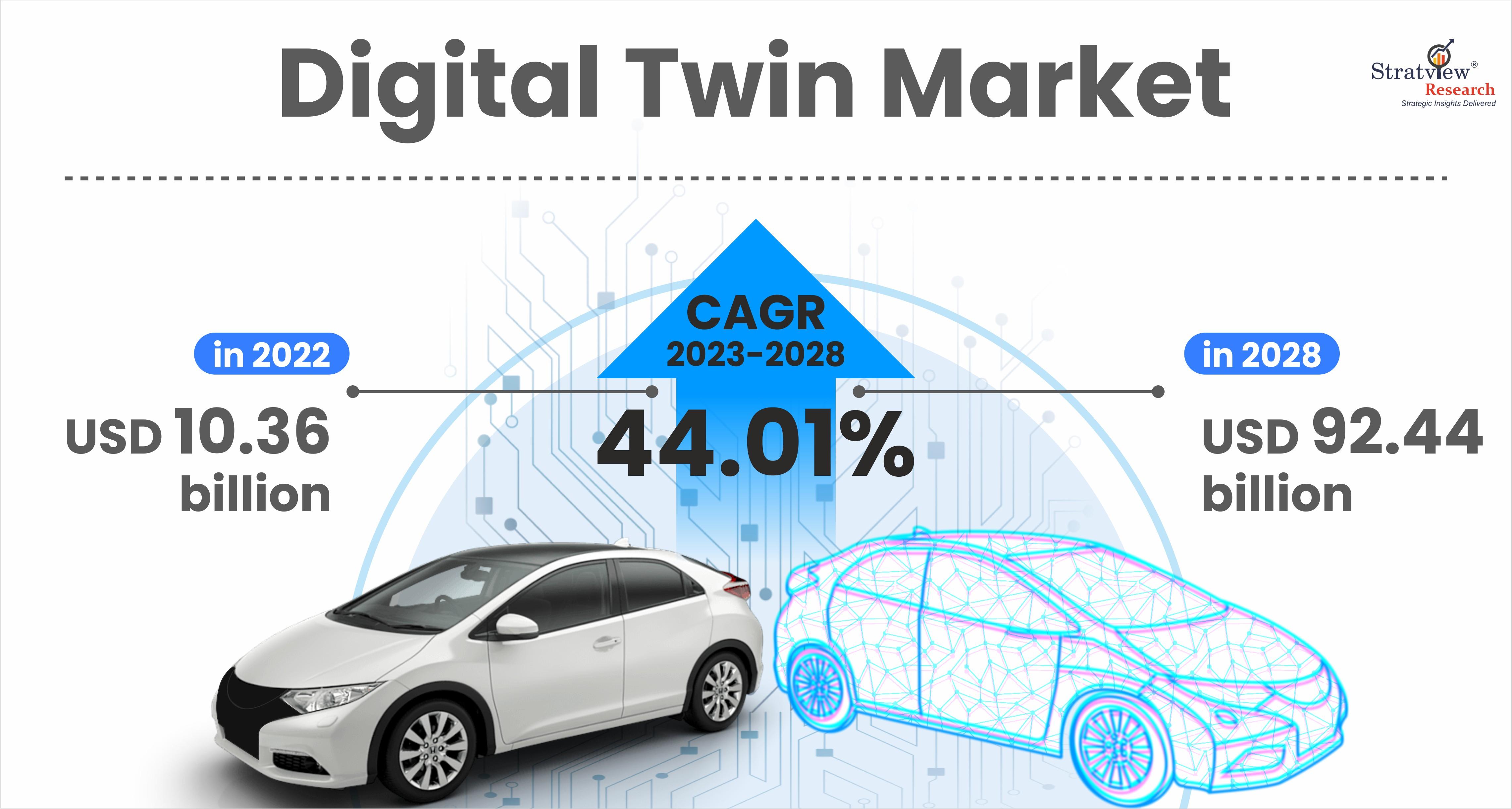Digital Twin Technology: Key Drivers of Market Expansion

Digital twin technology has emerged as a powerful tool across industries, enabling companies to create virtual replicas of physical objects, processes, or systems. These digital models provide real-time insights, predictive capabilities, and optimization tools that improve efficiency, reduce costs, and foster innovation. The global digital twin market is expanding rapidly, driven by several key factors that are accelerating its adoption and integration across various sectors. In this article, we explore the primary drivers behind the market expansion of digital twin technology.
According to Stratview Research, the digital twin market was estimated at USD 10.36 billion in 2022 and is likely to grow at a CAGR of 44.01% during 2023-2028 to reach USD 92.44 billion in 2028.
1. Advancements in IoT and Connectivity
One of the most significant drivers of digital twin market growth is the widespread adoption of the Internet of Things (IoT). IoT devices, such as sensors and connected machines, generate vast amounts of data that feed into digital twins, allowing for real-time monitoring and analysis. The continuous flow of data between physical assets and their digital counterparts enables organizations to optimize performance, predict maintenance needs, and reduce downtime.
As IoT connectivity improves with the advent of 5G technology, the capabilities of digital twins will expand further, supporting faster and more reliable data transfer. This will enhance real-time decision-making, making digital twins an essential tool for industries like manufacturing, energy, and smart cities.
2. Growing Demand for Predictive Maintenance
Another key driver of digital twin market expansion is the growing demand for predictive maintenance. Companies are increasingly seeking solutions to prevent equipment failures, reduce operational costs, and improve asset reliability. Digital twins provide a comprehensive view of equipment performance, enabling organizations to predict potential failures before they occur. By utilizing historical and real-time data, companies can schedule maintenance proactively, rather than reactively, which extends asset lifecycles and minimizes unexpected downtime.
Industries such as aerospace, automotive, and industrial manufacturing are particularly benefiting from the predictive maintenance capabilities of digital twins, driving further adoption across these sectors.
3. AI and Machine Learning Integration
The integration of artificial intelligence (AI) and machine learning (ML) is a major factor fueling the digital twin market's growth. AI-powered digital twins can analyze large datasets, identify patterns, and provide actionable insights to improve processes. Machine learning algorithms enable digital twins to continuously learn from data, adapting and optimizing operations over time.
For example, in healthcare, digital twins can simulate patient conditions, predict treatment outcomes, and personalize care plans. In manufacturing, AI-powered digital twins can optimize production lines, improve quality control, and reduce energy consumption.
4. Smart City Initiatives
The rise of smart city initiatives is another crucial driver behind the expansion of the digital twin market. City planners and governments are leveraging digital twins to model urban environments, optimize resource allocation, and improve infrastructure management. By creating digital replicas of buildings, transportation networks, and utilities, cities can simulate the impact of policy changes, monitor traffic flow, and reduce energy consumption.
As urbanization increases, smart cities are expected to become a major growth area for digital twin technology, enabling more efficient and sustainable urban development.
Conclusion
The expansion of the digital twin market is being driven by advancements in IoT, AI integration, predictive maintenance demands, and smart city initiatives. As industries across the board continue to recognize the value of real-time insights and predictive capabilities, the adoption of digital twin technology is expected to surge. With ongoing technological developments, digital twins are set to play a critical role in optimizing operations, reducing costs, and driving innovation in the years to come.
- Art
- Causes
- Crafts
- Dance
- Drinks
- Film
- Fitness
- Food
- Games
- Gardening
- Health
- Home
- Literature
- Music
- Networking
- Other
- Party
- Religion
- Shopping
- Sports
- Theater
- Wellness


